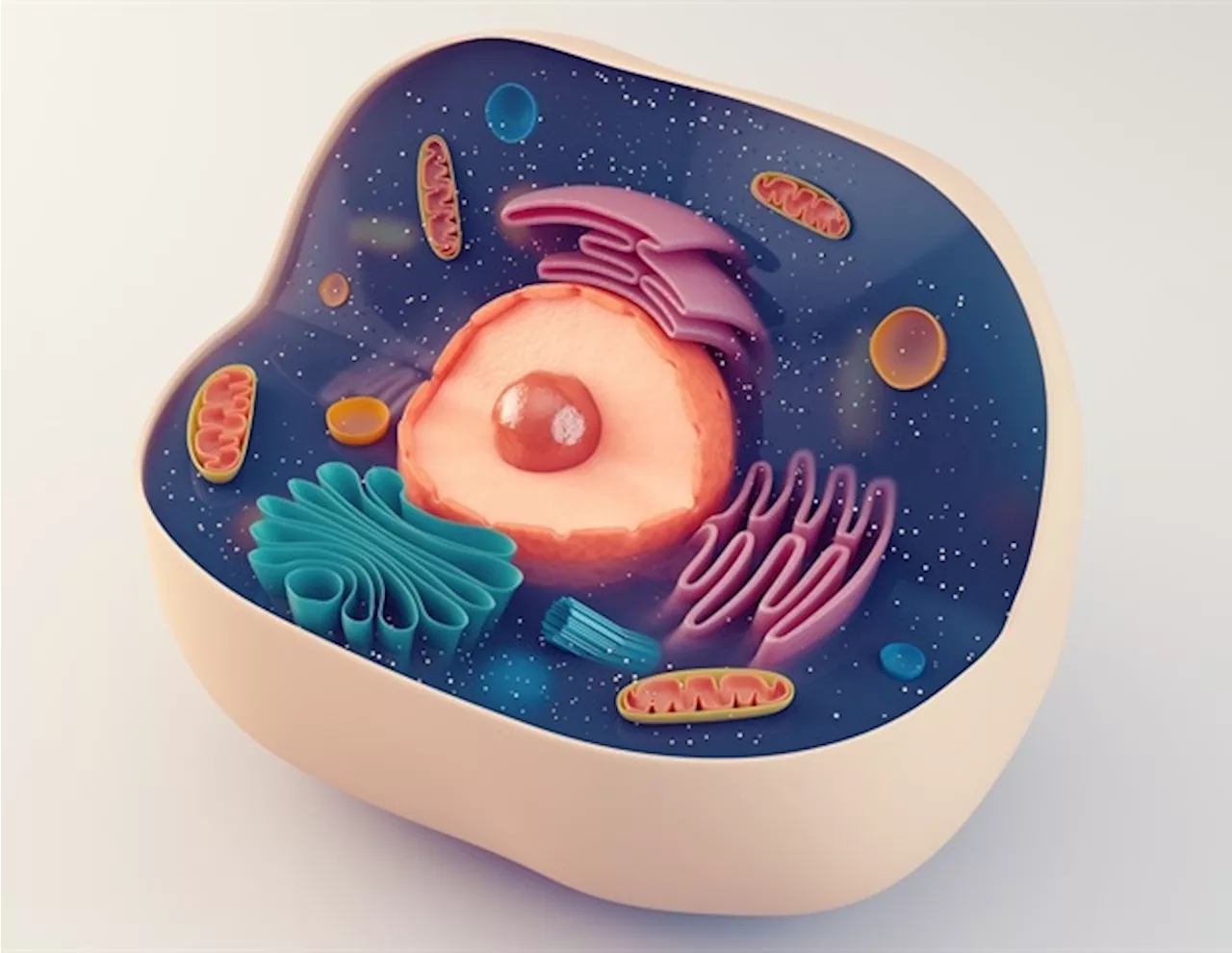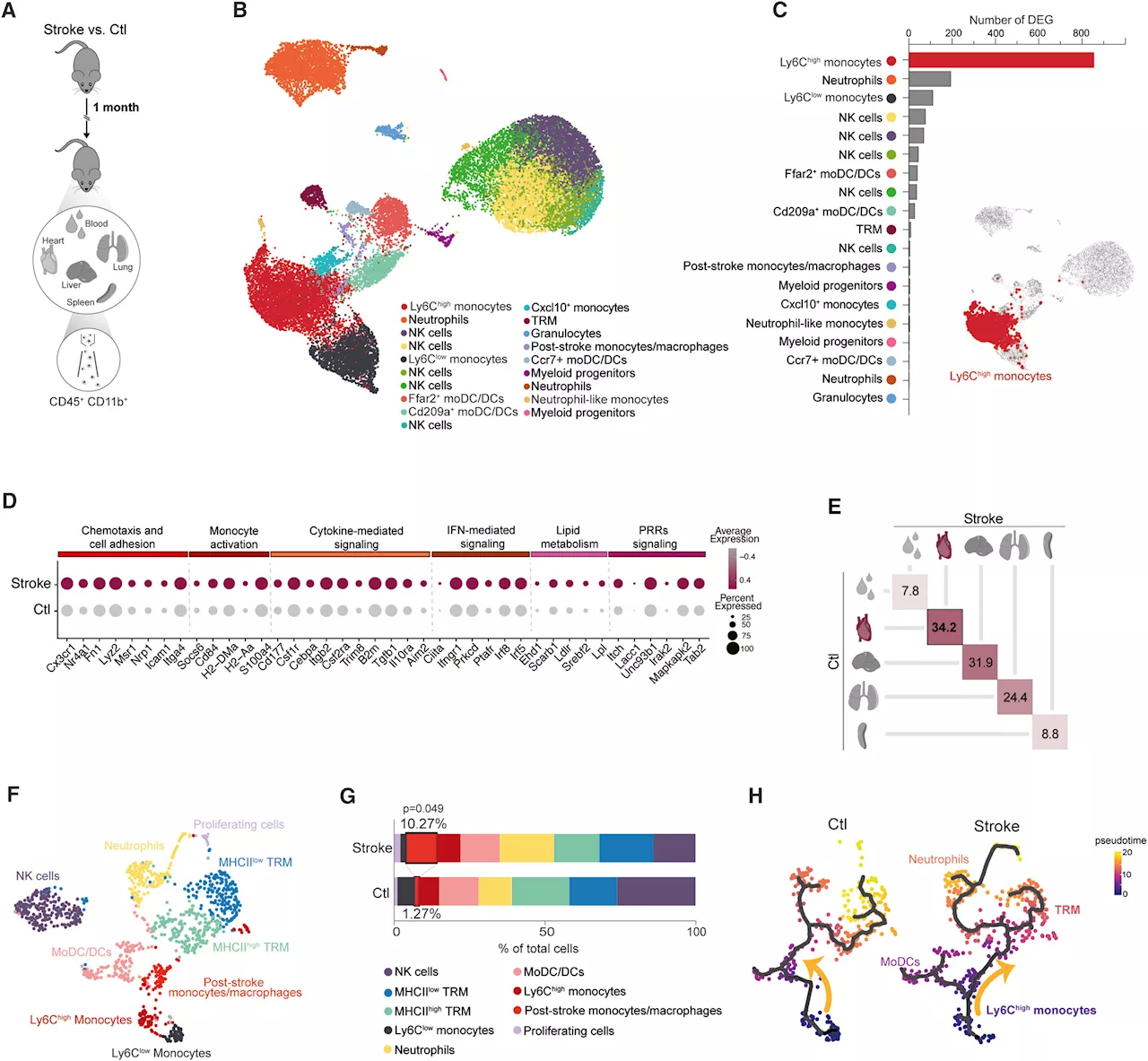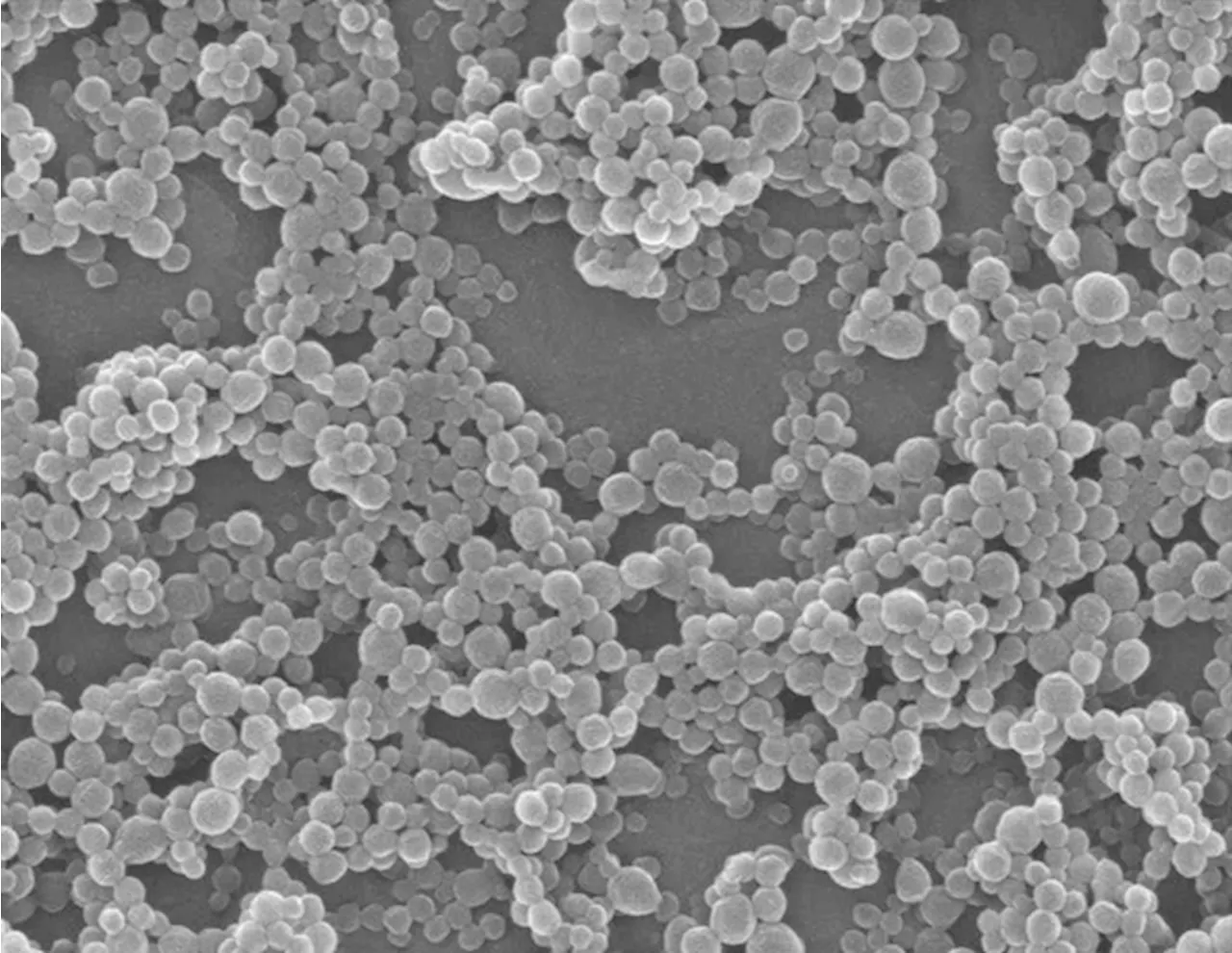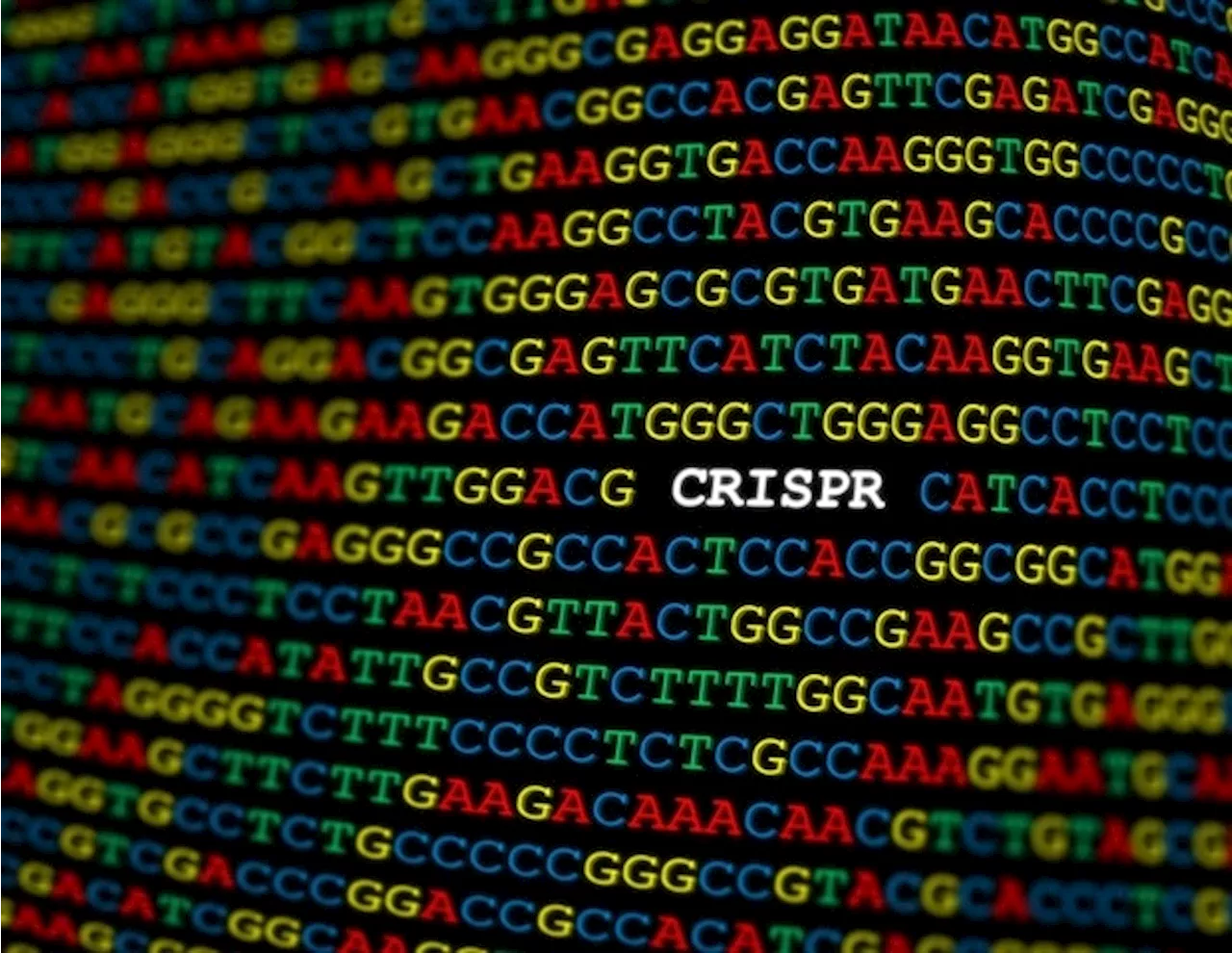Strokes lead to irreversible damage to the brain and are one of the most common causes of dependency or death.
Medical University of ViennaAug 1 2024 As the cellular reactions to a cerebral infarction are not yet fully understood, there is a lack of possible approaches to promote the regeneration of damaged nerve tissue in the brain. A study led by MedUni Vienna and recently published in "Nature Communications" closes crucial gaps in our knowledge and paves the way for research into new, targeted therapeutic strategies.
In order to investigate the activity of individual cells in the brain after a stroke, the research team led by first author Daniel Bormann and study leaders Hendrik J. Ankersmit and Michael Mildner used single-cell RNA sequencing in animal models, which are already established in stroke research. Using this method, the researchers were able to identify different cell types and their reactions in the early phase after a cerebral infarction.
Cellular interaction in the infarct area Scientists already know that astrocytes divide rapidly after a stroke and accumulate around the infarct area. We have been able to show, that oligodentrocyte precursor cells also divide in the acute infarct phase and accumulate at the edge of the damaged nerve tissue.
After cardiovascular diseases and cancer, strokes are the third most common cause of death in Austria and the most frequent cause of permanent disability and the need for long-term care. An ischaemic stroke is caused by the blockage of a blood vessel in the brain. The resulting interruption in the supply of oxygen and nutrients leads to a cerebral infarction in which nerve tissue is irreversibly damaged.
Blood Brain Cell Cerebral Infarction Molecule Nerve Research Surgery
United Kingdom Latest News, United Kingdom Headlines
Similar News:You can also read news stories similar to this one that we have collected from other news sources.
 INTEGRA Biosciences and Parse Biosciences offer affordable, automated single cell RNA sequencingINTEGRA Biosciences and Parse Biosciences have partnered to automate single cell RNA sequencing (scRNA-seq) on the ASSIST PLUS pipetting robot.
INTEGRA Biosciences and Parse Biosciences offer affordable, automated single cell RNA sequencingINTEGRA Biosciences and Parse Biosciences have partnered to automate single cell RNA sequencing (scRNA-seq) on the ASSIST PLUS pipetting robot.
Read more »
 Key differences in RNA editing found between postmortem and living brainResearchers examined the adenosine-to-inosine (A-to-I) nucleoside editing of postmortem and live prefrontal cortical tissues.
Key differences in RNA editing found between postmortem and living brainResearchers examined the adenosine-to-inosine (A-to-I) nucleoside editing of postmortem and live prefrontal cortical tissues.
Read more »
 Brain-heart axis study finds strokes change epigenetics of immune systemA stroke not only causes acute damage to the brain, but can also have long-term health implications for other organs—such as the heart.
Brain-heart axis study finds strokes change epigenetics of immune systemA stroke not only causes acute damage to the brain, but can also have long-term health implications for other organs—such as the heart.
Read more »
 Innovative approaches in polymer nanoparticle synthesis for RNA therapeuticsRNA therapy with polymer nanoparticles is considered a promising approach for the treatment of various illnesses.
Innovative approaches in polymer nanoparticle synthesis for RNA therapeuticsRNA therapy with polymer nanoparticles is considered a promising approach for the treatment of various illnesses.
Read more »
 ARPA-H funding boosts Wyss Institute's RNA therapeutic projectWith the award for up to $27 million from the Advanced Research Projects Agency for Health (ARPA-H), a collaborative research project at the Wyss Institute for Biologically Inspired Engineering at Harvard University will advance a disease-agnostic novel RNA therapeutic with the potential to treat diverse diseases, and to be effectively and rapidly...
ARPA-H funding boosts Wyss Institute's RNA therapeutic projectWith the award for up to $27 million from the Advanced Research Projects Agency for Health (ARPA-H), a collaborative research project at the Wyss Institute for Biologically Inspired Engineering at Harvard University will advance a disease-agnostic novel RNA therapeutic with the potential to treat diverse diseases, and to be effectively and rapidly...
Read more »
 Novel method enables RNA detection with Cas12 nucleasesCRISPR-Cas systems, defense systems in bacteria, have become a plentiful source of technologies for molecular diagnostics.
Novel method enables RNA detection with Cas12 nucleasesCRISPR-Cas systems, defense systems in bacteria, have become a plentiful source of technologies for molecular diagnostics.
Read more »
